
Pydio Cells is an open-core, self-hosted Document Sharing and Collaboration platform (DSC) specifically designed for organizations that need advanced document sharing and collaboration without security trade-offs or compliance issues. It is a full rewrite of the Pydio project using the Go language following a micro-service architecture. Pydio Cells gives you full control of your document sharing environment – combining fast performance, huge file transfer sizes, granular security, etc. In this step by step guide I will show you how to install Pydio Cells on your Synology NAS using Docker and Portainer.
This guide works perfectly with the latest Pydio Cells v4.4.15 release.
STEP 1
Please Support My work by Making a Donation.
STEP 2
Install Portainer using my step by step guide. If you already have Portainer installed on your Synology NAS, skip this STEP. Attention: Make sure you have installed the latest Portainer version.
STEP 3
Make sure you have a synology.me Wildcard Certificate. Follow my guide to get a Wildcard Certificate. If you already have a synology.me Wildcard certificate, skip this STEP.
STEP 4
Go to Control Panel / Login Portal / Advanced Tab / click Reverse Proxy. Follow the instructions in the image below.
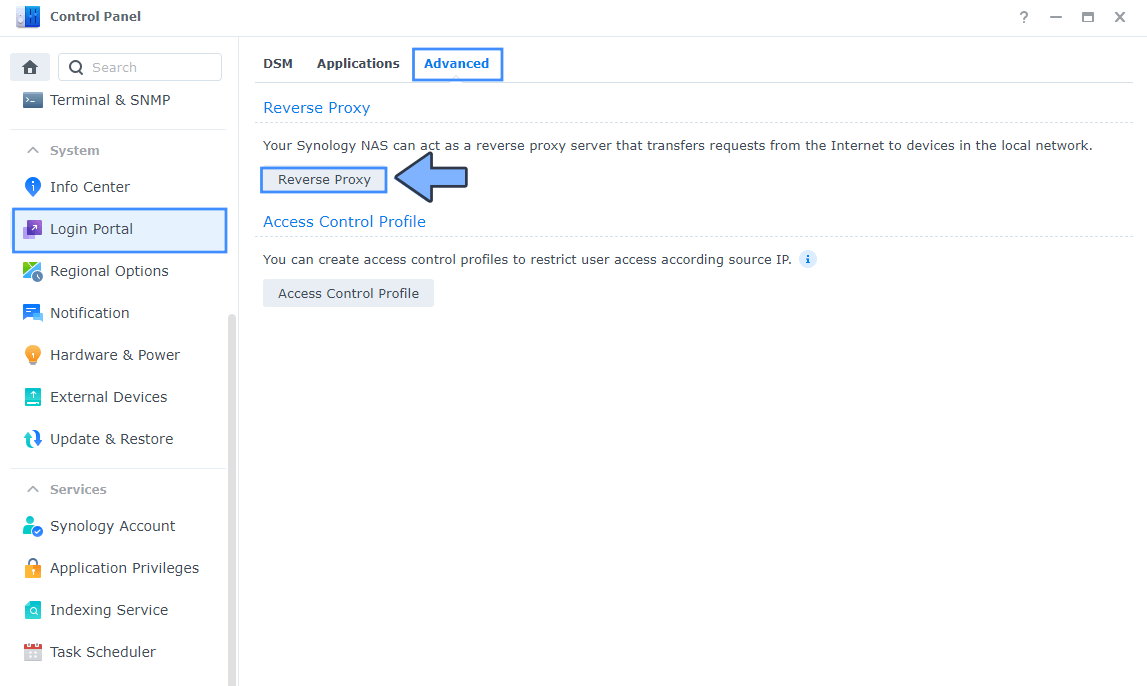
STEP 5
Now click the “Create” button. Follow the instructions in the image below.
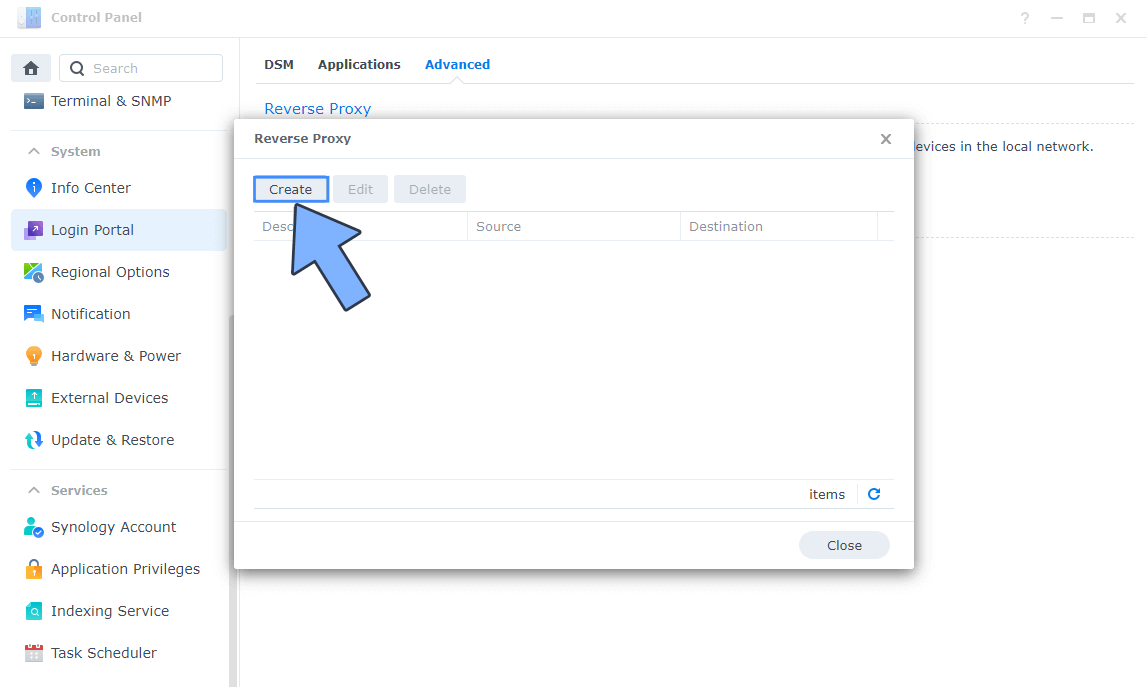
STEP 6
After you click the Create button, the window below will open. Follow the instructions in the image below.
On the General area, set the Reverse Proxy Name description: type in Pydio. After that, add the following instructions:
Source:
Protocol: HTTPS
Hostname: pydio.yourname.synology.me
Port: 443
Check Enable HSTS
Destination:
Protocol: HTTPS
Hostname: localhost
Port: 8430
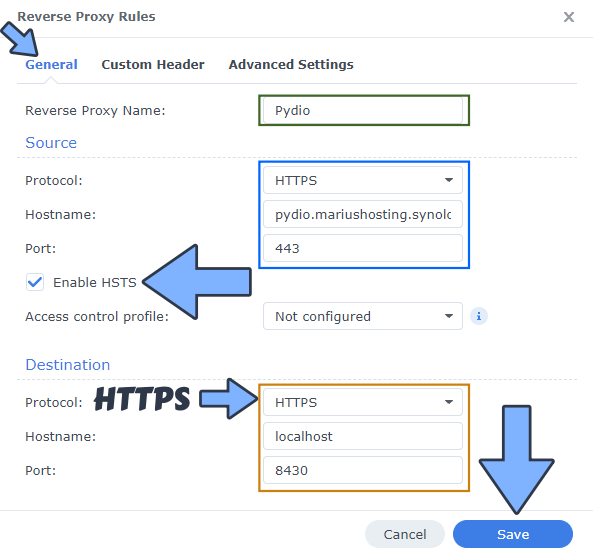
STEP 7
On the Reverse Proxy Rules click the Custom Header tab. Click Create and then, from the drop-down menu, click WebSocket. After you click on WebSocket, two Header Names and two Values will be automatically added. Click Save. Follow the instructions in the image below.

STEP 8
Go to Control Panel / Network / Connectivity tab/ Check Enable HTTP/2 then click Apply. Follow the instructions in the image below.
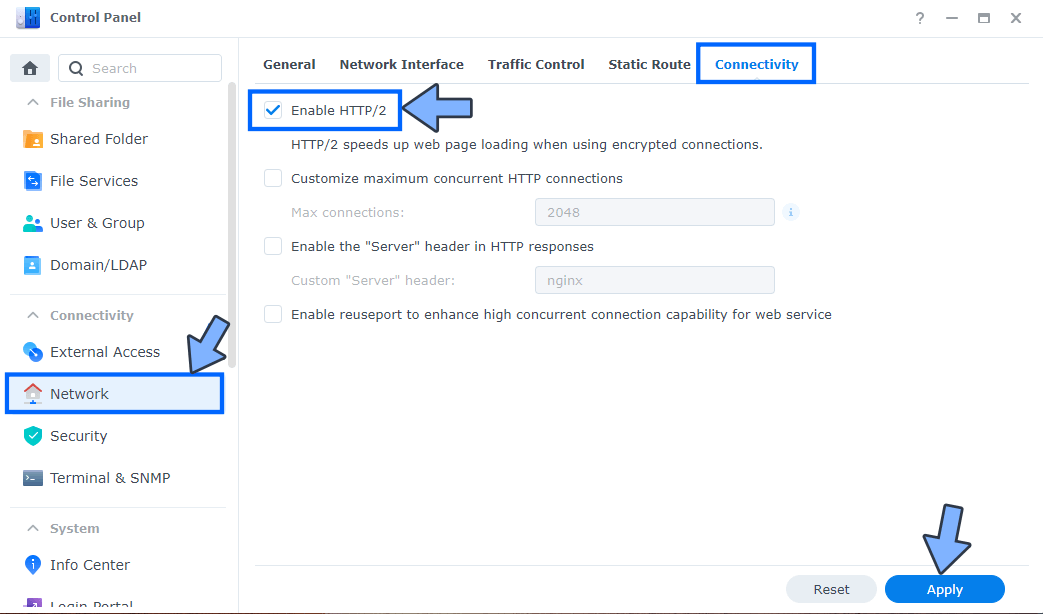
STEP 9
Go to Control Panel / Security / Advanced tab/ Check Enable HTTP Compression then click Apply. Follow the instructions in the image below.
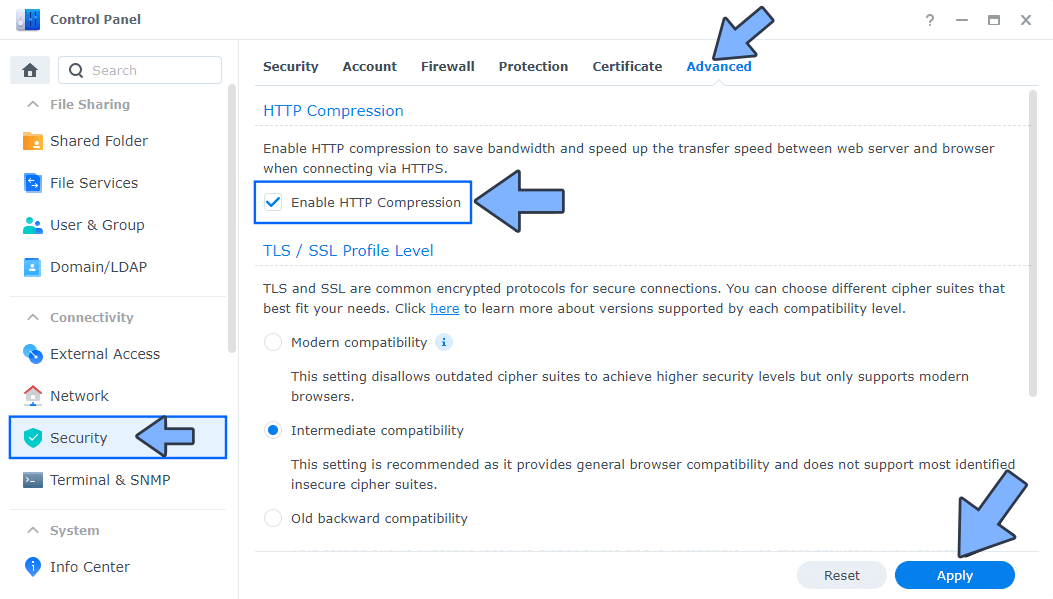
STEP 10
Go to File Station and open the docker folder. Inside the docker folder, create one new folder and name it pydio. Follow the instructions in the image below.
Note: Be careful to enter only lowercase, not uppercase letters.
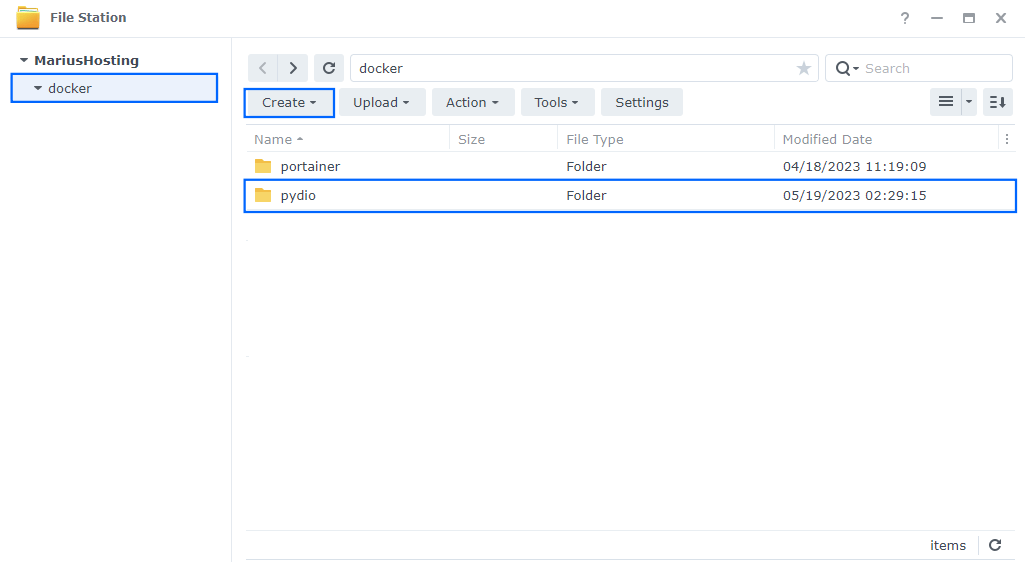
STEP 11
Now create three new folders inside the pydio folder that you created at STEP 10 and name them cells, data and db. Follow the instructions in the image below.
Note: Be careful to enter only lowercase, not uppercase letters.
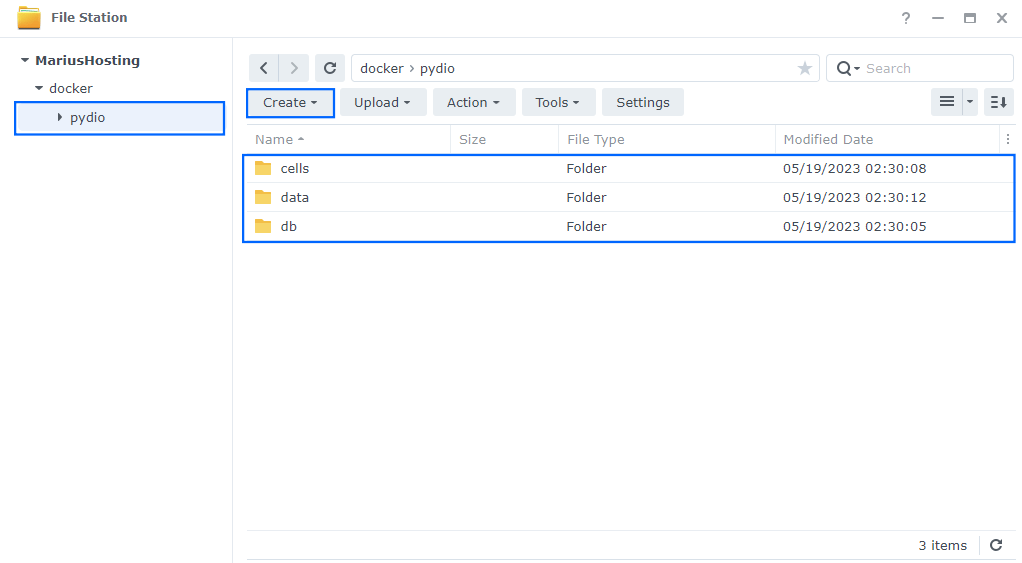
STEP 12
Log into Portainer using your username and password. On the left sidebar in Portainer, click on Stacks then + Add stack. Follow the instructions in the image below.

STEP 13
In the Name field type in pydio. Follow the instructions in the image below.
services:
db:
image: mariadb:11.4-noble #LTS Long Time Support Until May 29, 2029.
container_name: Pydio-DB
hostname: pydio-db
mem_limit: 1g
cpu_shares: 768
security_opt:
- no-new-privileges:false
volumes:
- /volume1/docker/pydio/db:/var/lib/mysql:rw
environment:
TZ: Europe/Bucharest
MYSQL_ROOT_PASSWORD: rootpass
MYSQL_DATABASE: pydio
MYSQL_USER: pydiouser
MYSQL_PASSWORD: pydiopass
restart: on-failure:5
cells:
image: pydio/cells:latest
container_name: Pydio
hostname: pydio
mem_limit: 4g
cpu_shares: 768
security_opt:
- no-new-privileges:true
user: 1026:100
healthcheck:
test: wget --no-verbose --tries=1 --spider https://localhost:8080
ports:
- 8430:8080
volumes:
- /volume1/docker/pydio/cells:/var/cells:rw
- /volume1/docker/pydio/data:/var/cells/data:rw
restart: on-failure:5
depends_on:
db:
condition: service_started
Note: Before you paste the code above in the Web editor area below, change the value for TZ. (Select your current Time Zone from this list.)
Note: Before you paste the code above in the Web editor area below, change the value numbers for user with your own values. (Follow my step by step guide on how to do this.) 1026 is my personal UID value and 100 is my personal GID value. You have to type in your own values.
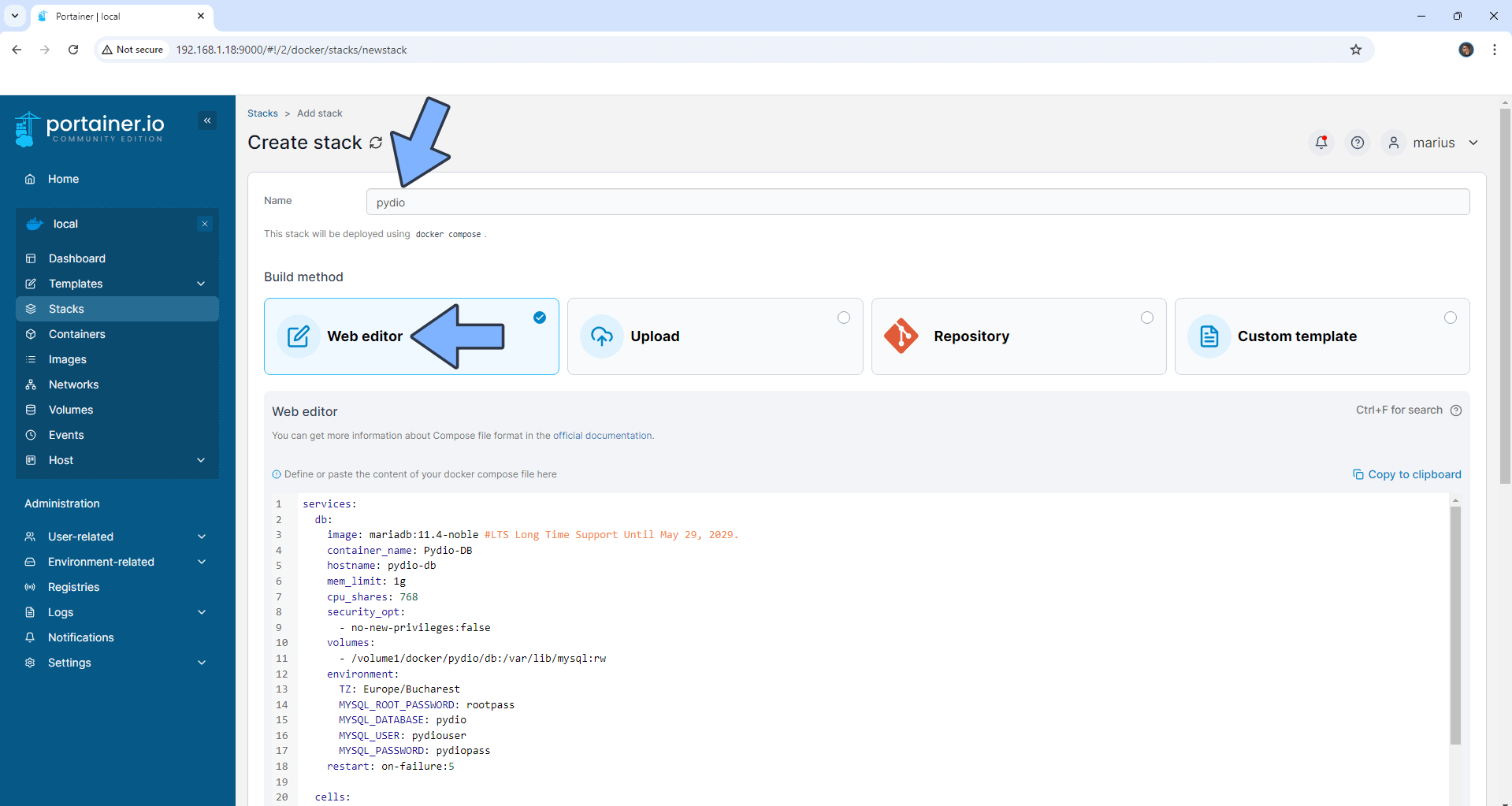
STEP 14
Scroll down on the page until you see a button named Deploy the stack. Click on it. Follow the instructions in the image below. The installation process can take up to a few minutes. It will depend on your Internet speed connection.
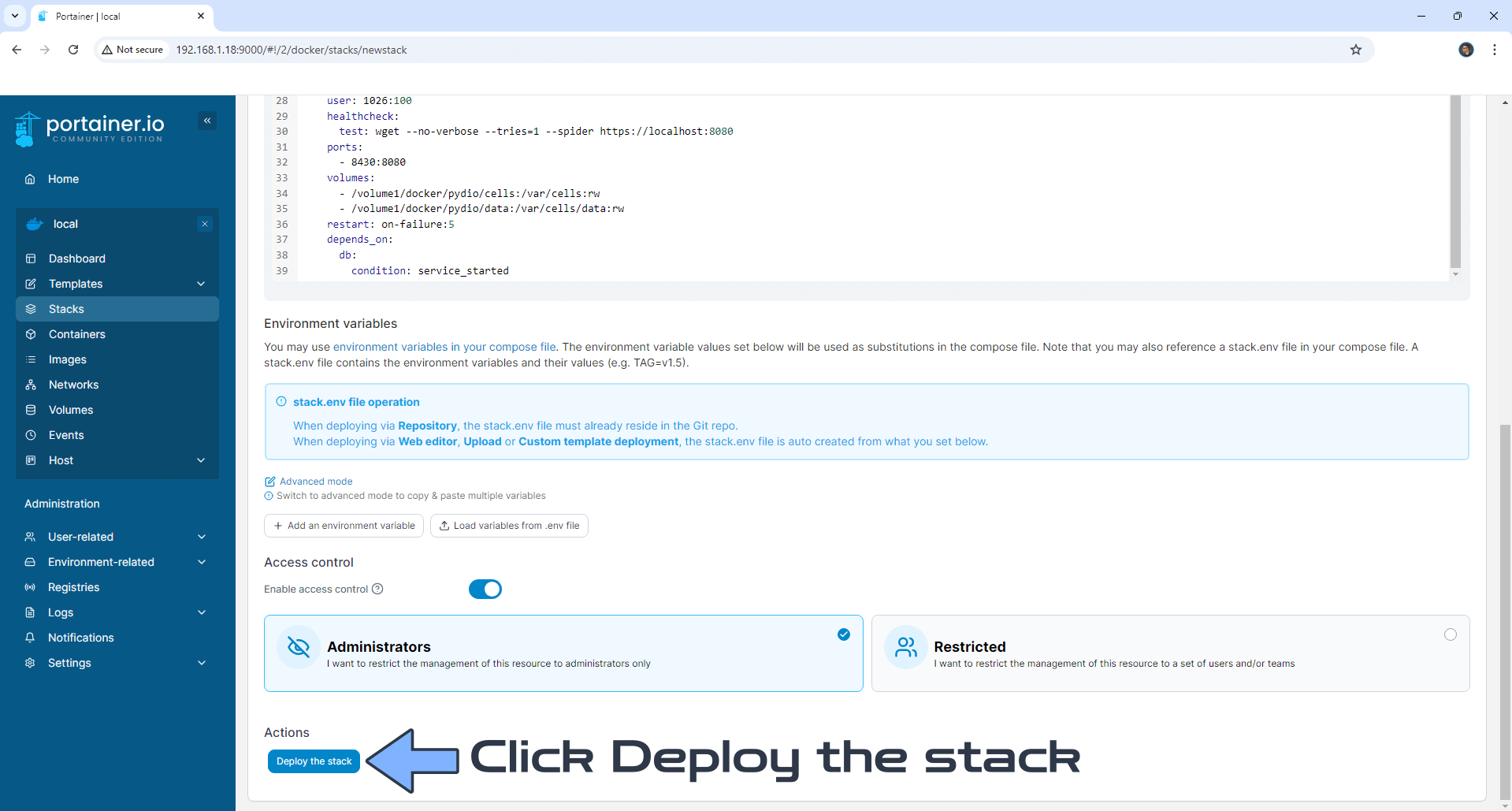
STEP 15
If everything goes right, you will see the following message at the top right of your screen: “Success Stack successfully deployed“.
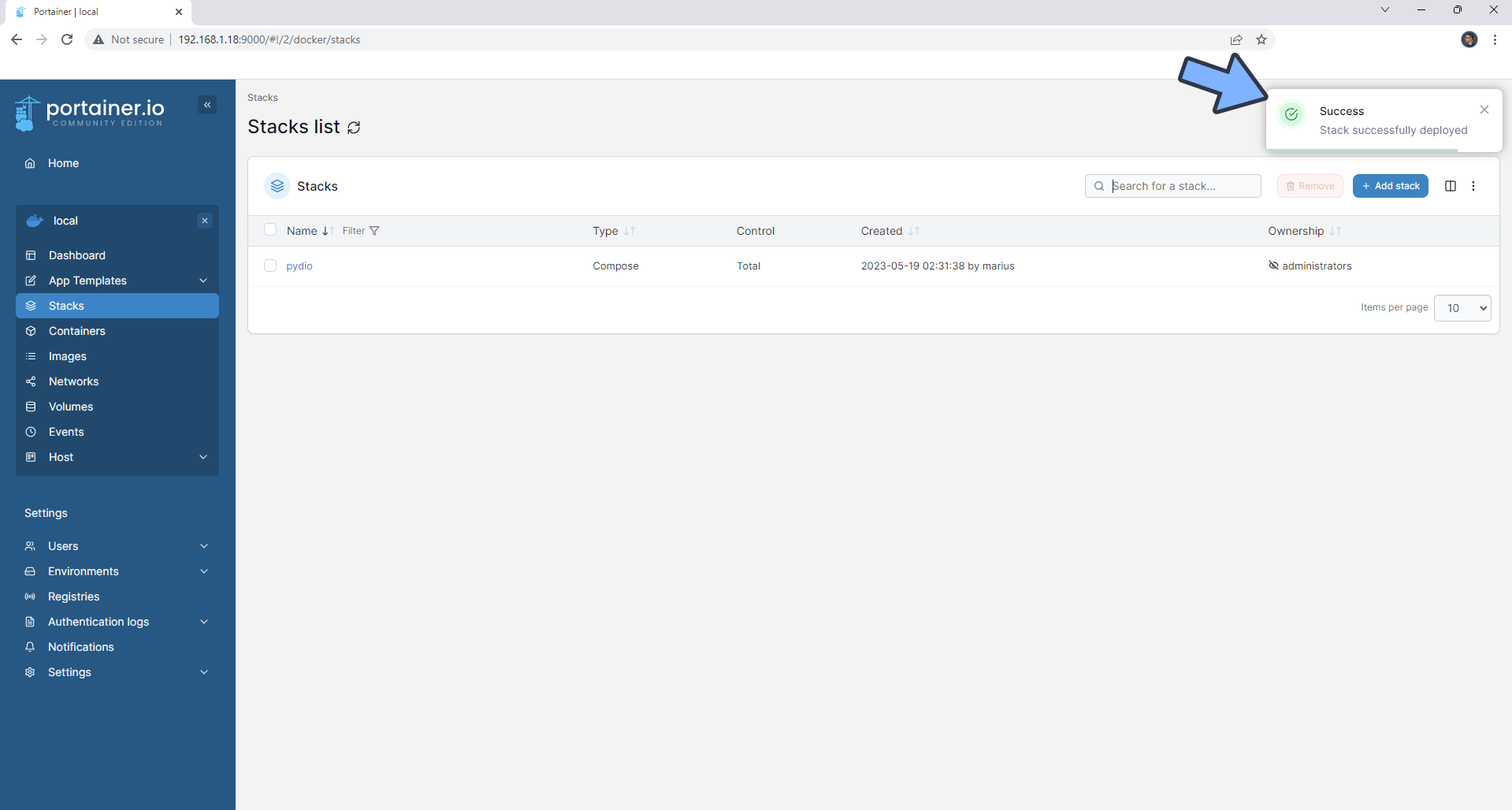
STEP 16
🟢Please Support My work by Making a Donation. Almost 99,9% of the people that install something using my guides forget to support my work, or just ignore STEP 1. I’ve been very honest about this aspect of my work since the beginning: I don’t run any ADS, I don’t require subscriptions, paid or otherwise, I don’t collect IPs, emails, and I don’t have any referral links from Amazon or other merchants. I also don’t have any POP-UPs or COOKIES. I have repeatedly been told over the years how much I have contributed to the community. It’s something I love doing and have been honest about my passion since the beginning. But I also Need The Community to Support me Back to be able to continue doing this work.
STEP 17
Now open your browser and type in your HTTPS/SSL certificate like this https://pydio.yourname.synology.me that you have previously created at STEP 6. In my case it’s https://pydio.mariushosting.synology.me If everything goes right, you will see the Pydio Cells installation page. Agree with the terms, then click NEXT. Follow the instructions in the image below.
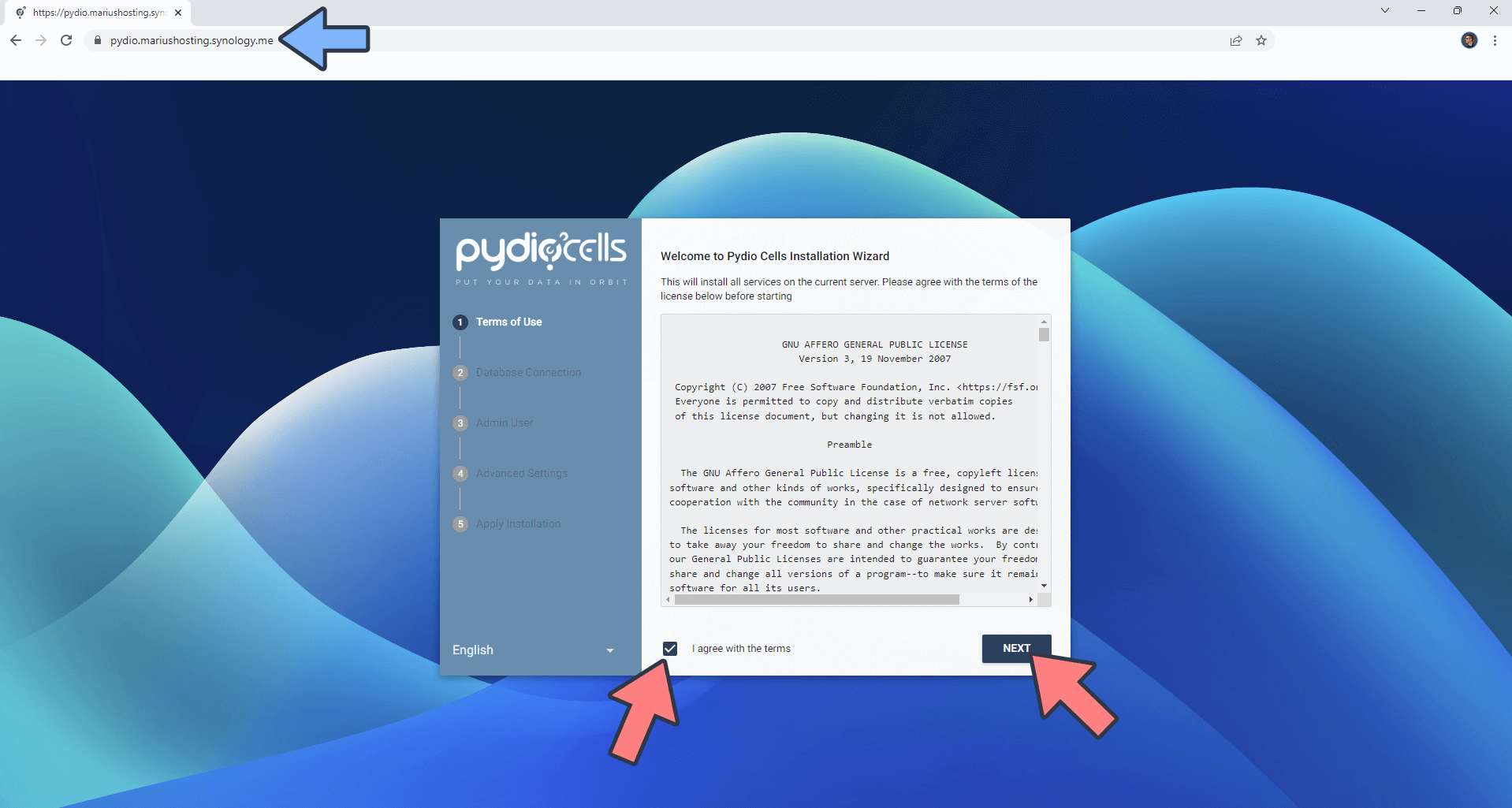
STEP 18
Database Configuration. Add the following data, then click NEXT. Follow the instructions in the image below.
- TCP
- On the Host Name field type in: pydio-db
- On the Port field type in: 3306
- On the Database Name field type in: pydio
- On the Database User field type in: pydiouser
- On the Database Password field type in: pydiopass
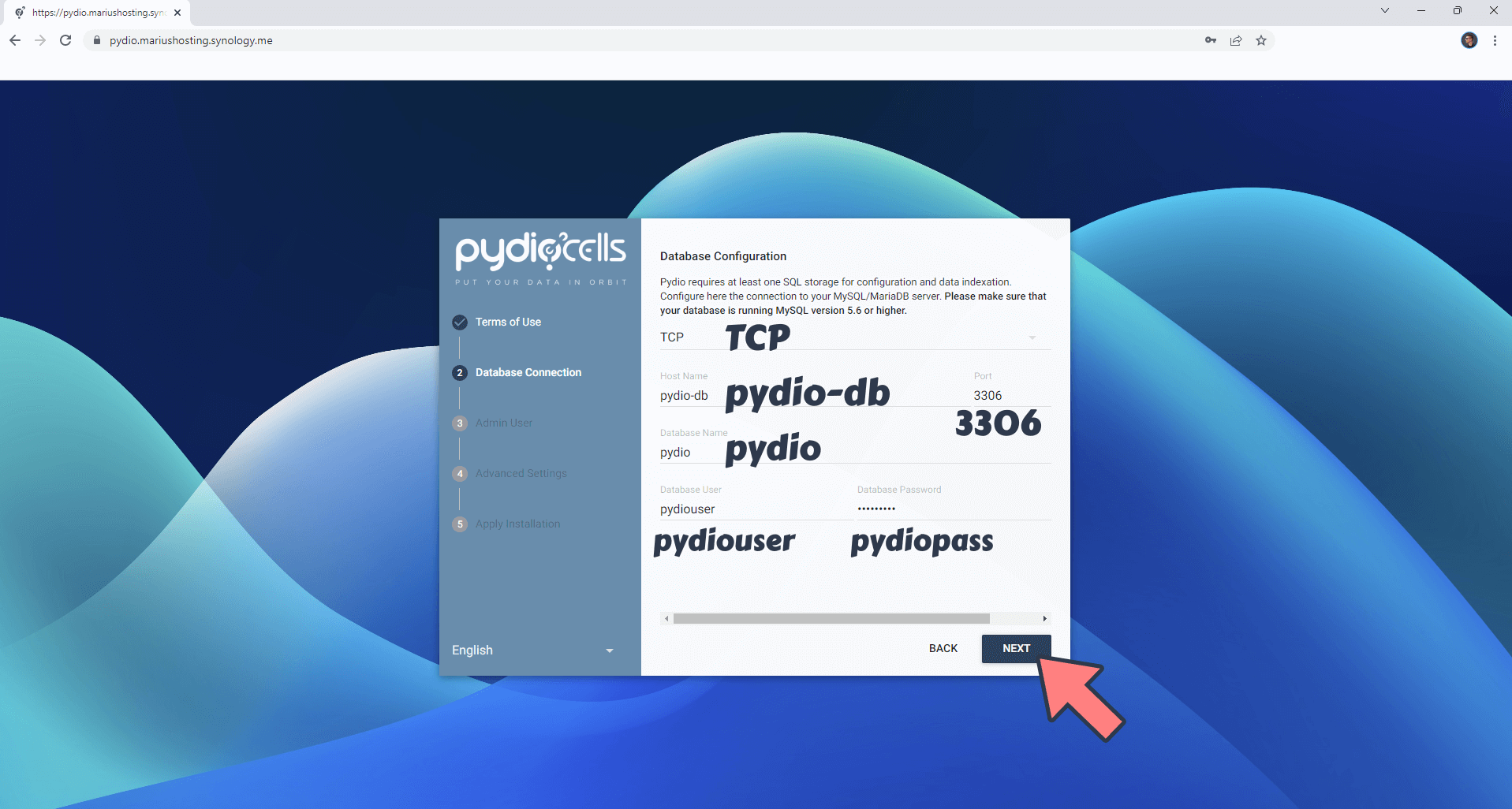
STEP 19
Add your own Application title, choose the language, then add your own Username and Password. Click NEXT. Follow the instructions in the image below.
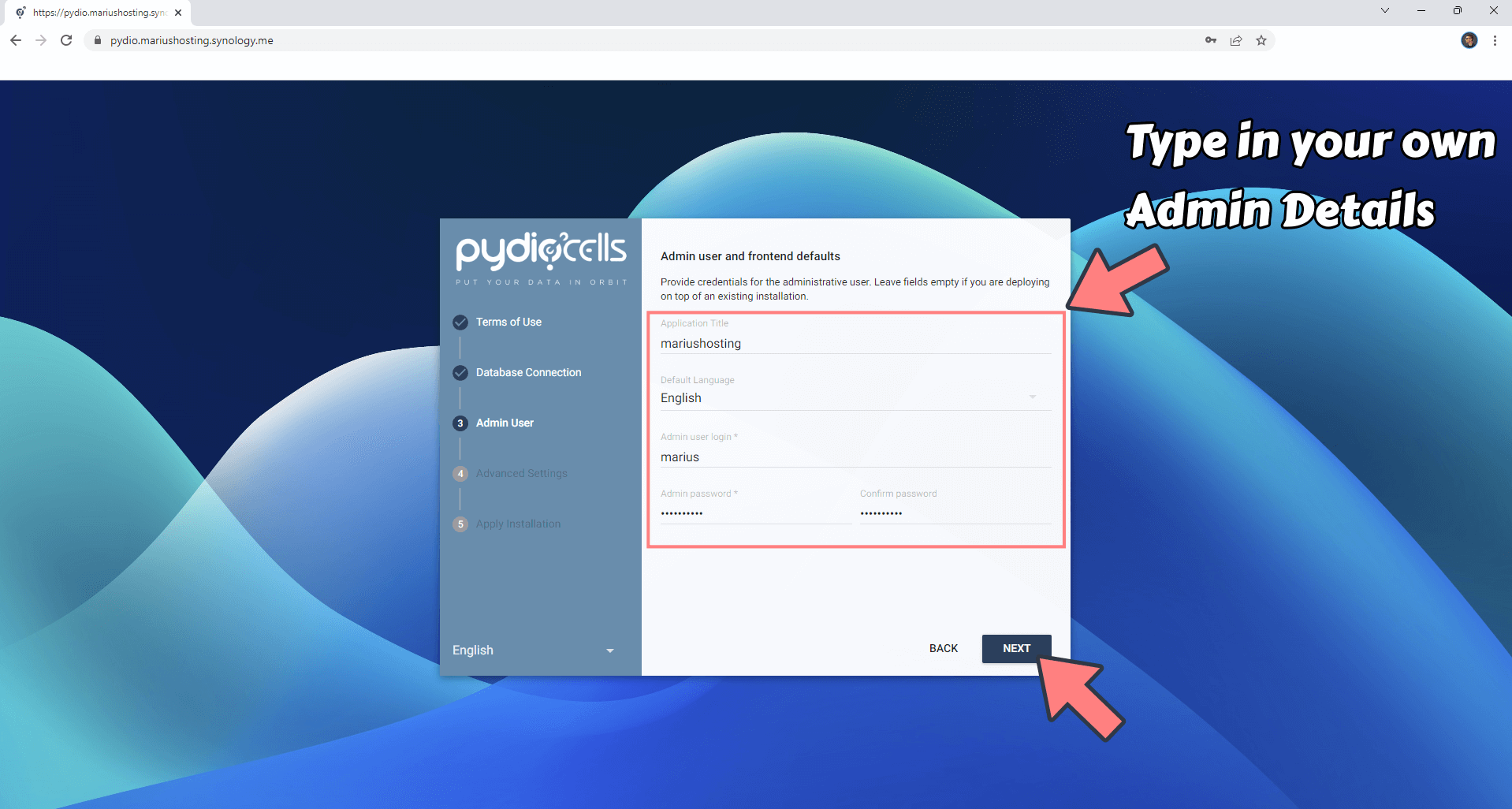
STEP 20
Click INSTALL NOW. Follow the instructions in the image below.
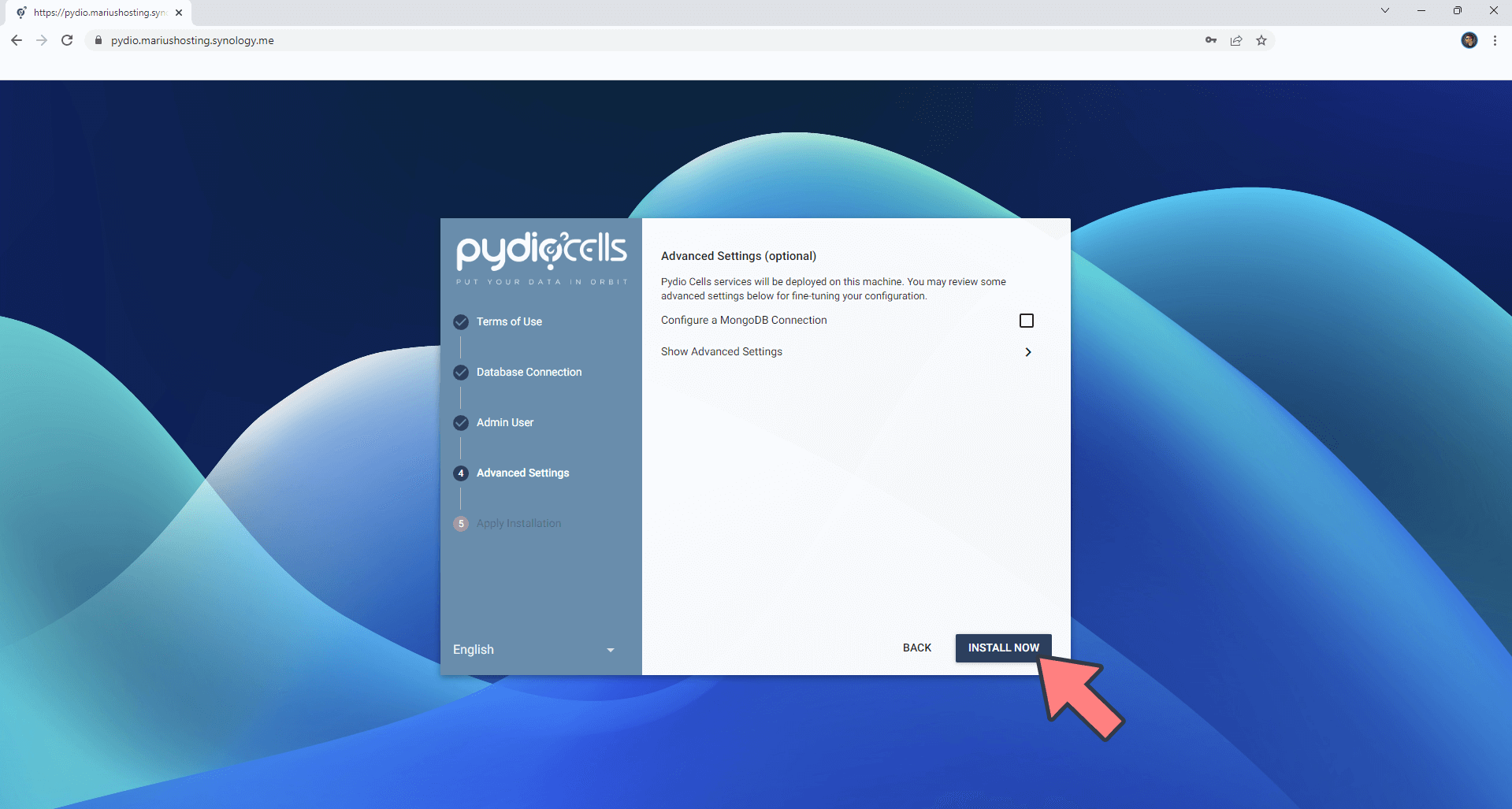
STEP 21
Wait a few minutes until the installation is done.
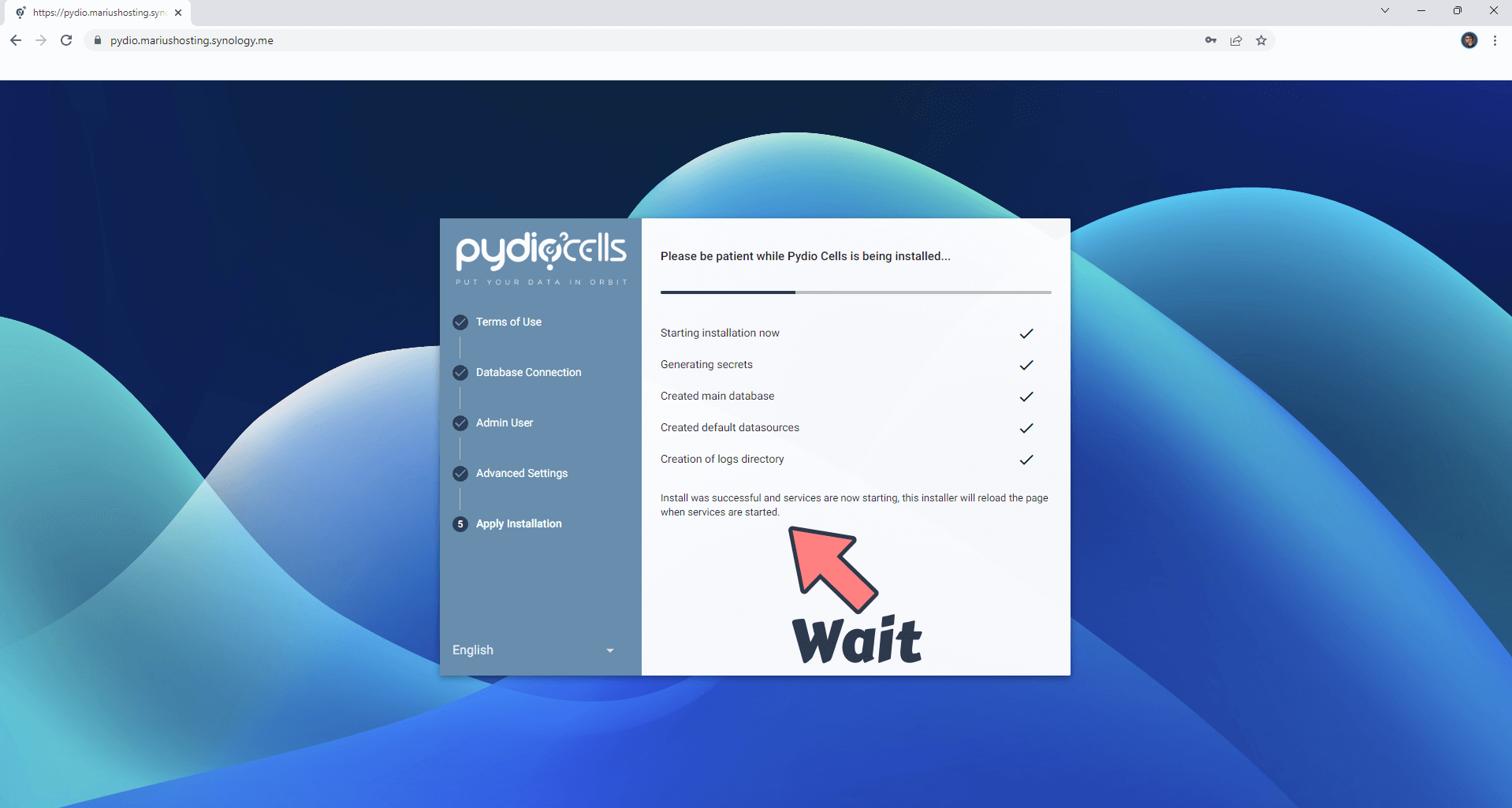
STEP 22
Wait for the automatic page refresh or click RELOAD. Follow the instructions in the image below.
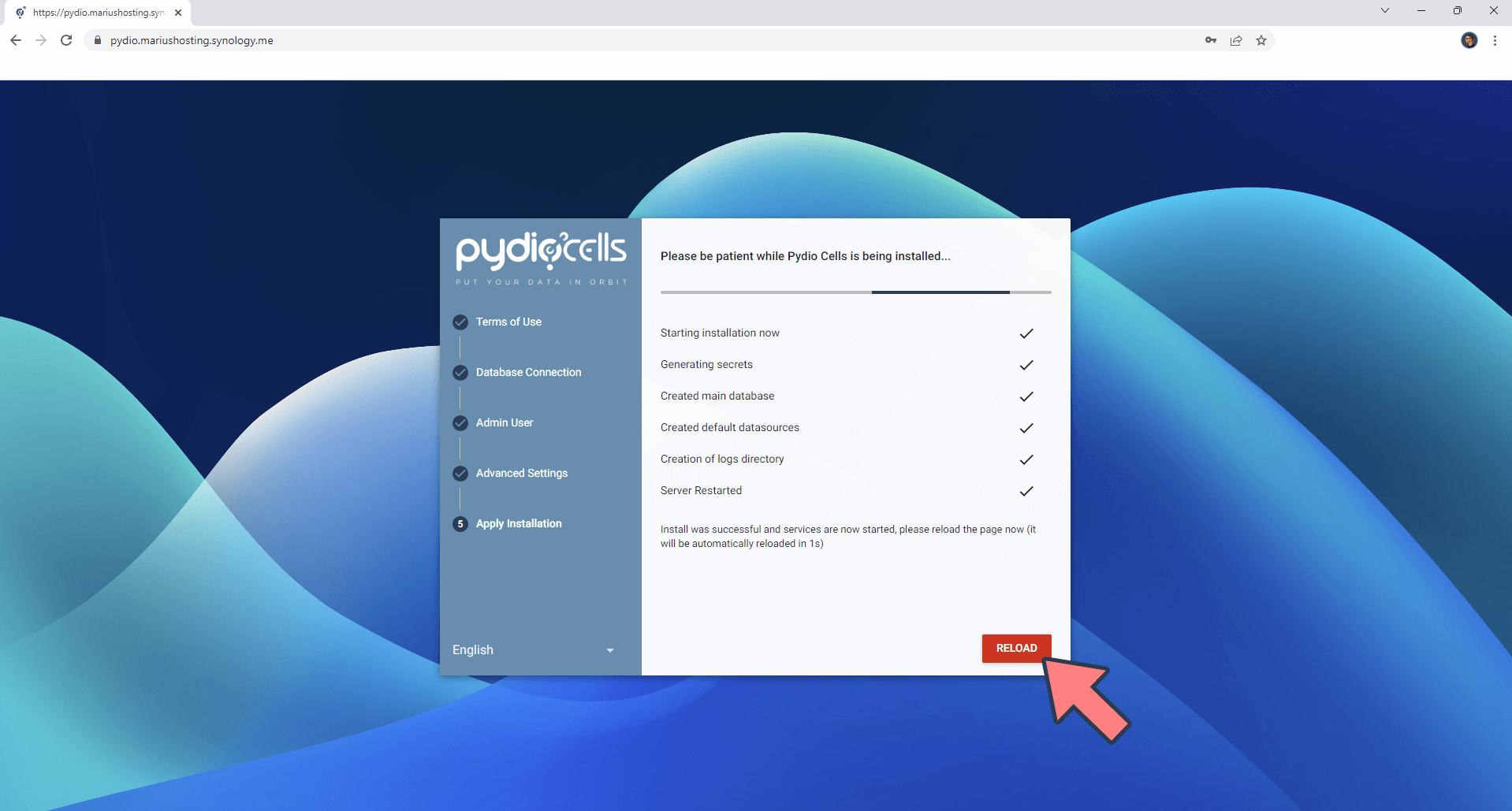
STEP 23
Type in your own Username and Password that you have previously created at STEP 19. Click Enter. Follow the instructions in the image below.
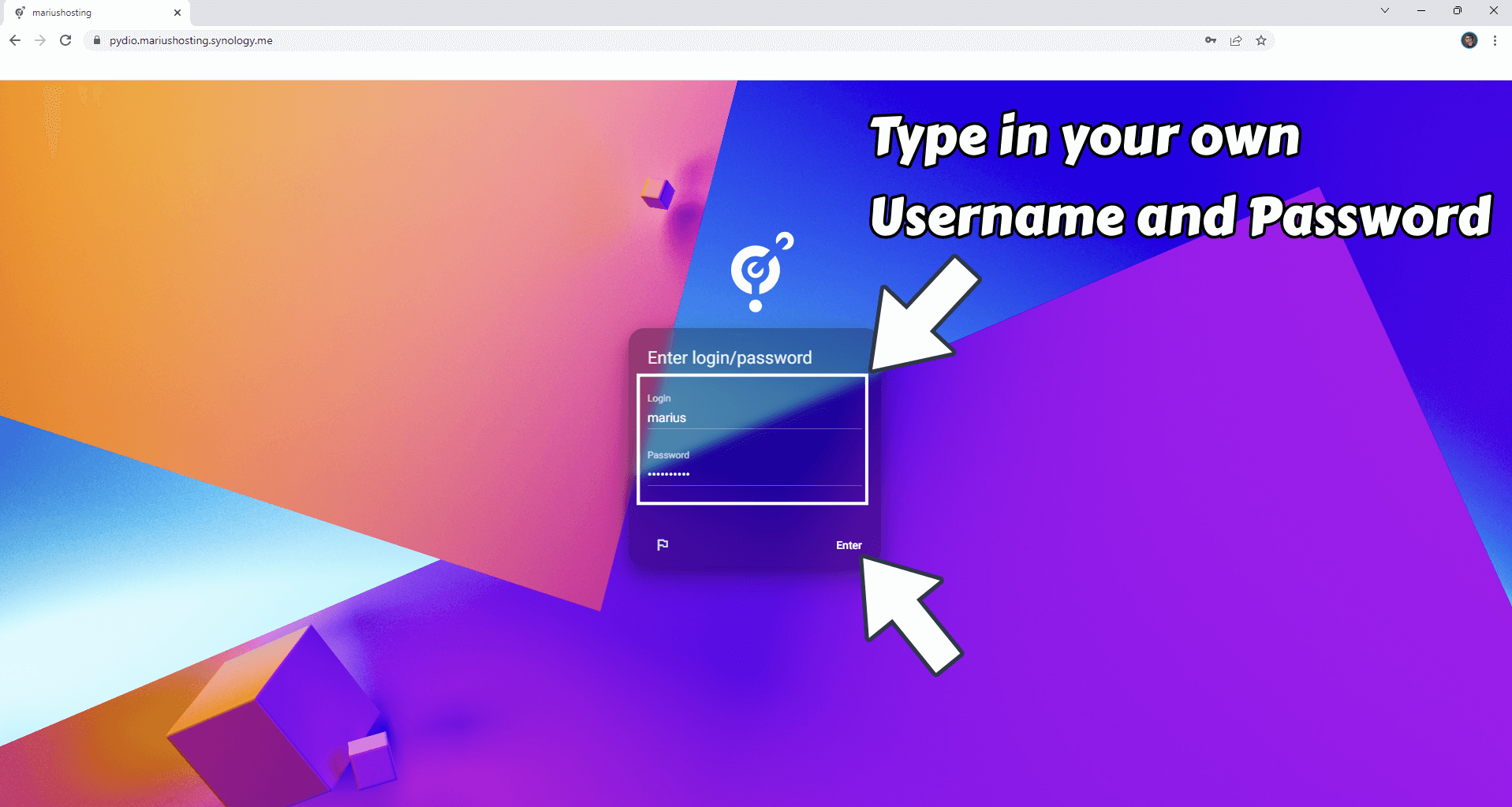
STEP 24
Upload your own Documents. Follow the instructions in the image below.
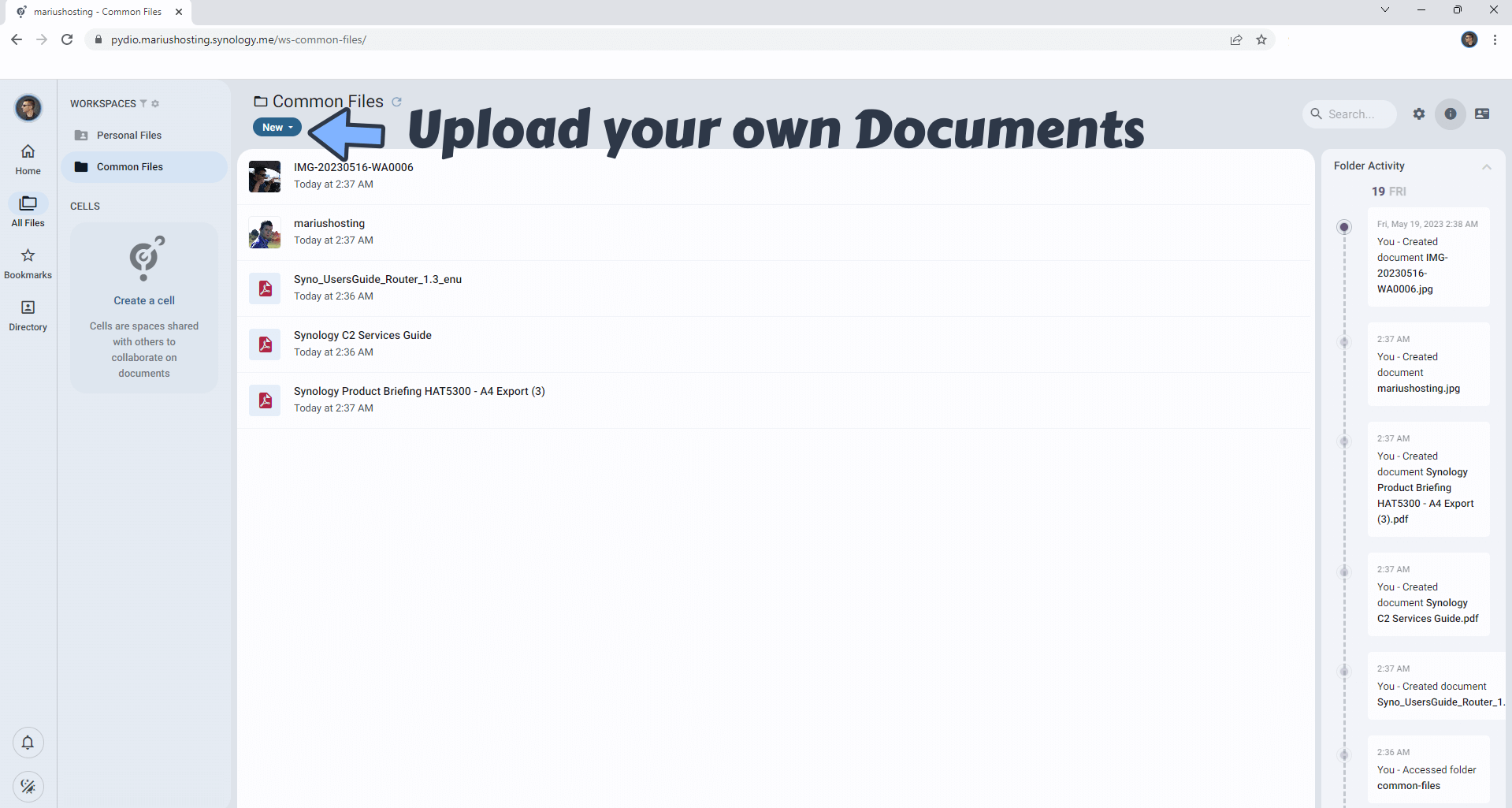
STEP 25
Share Documents. Follow the instructions in the image below.
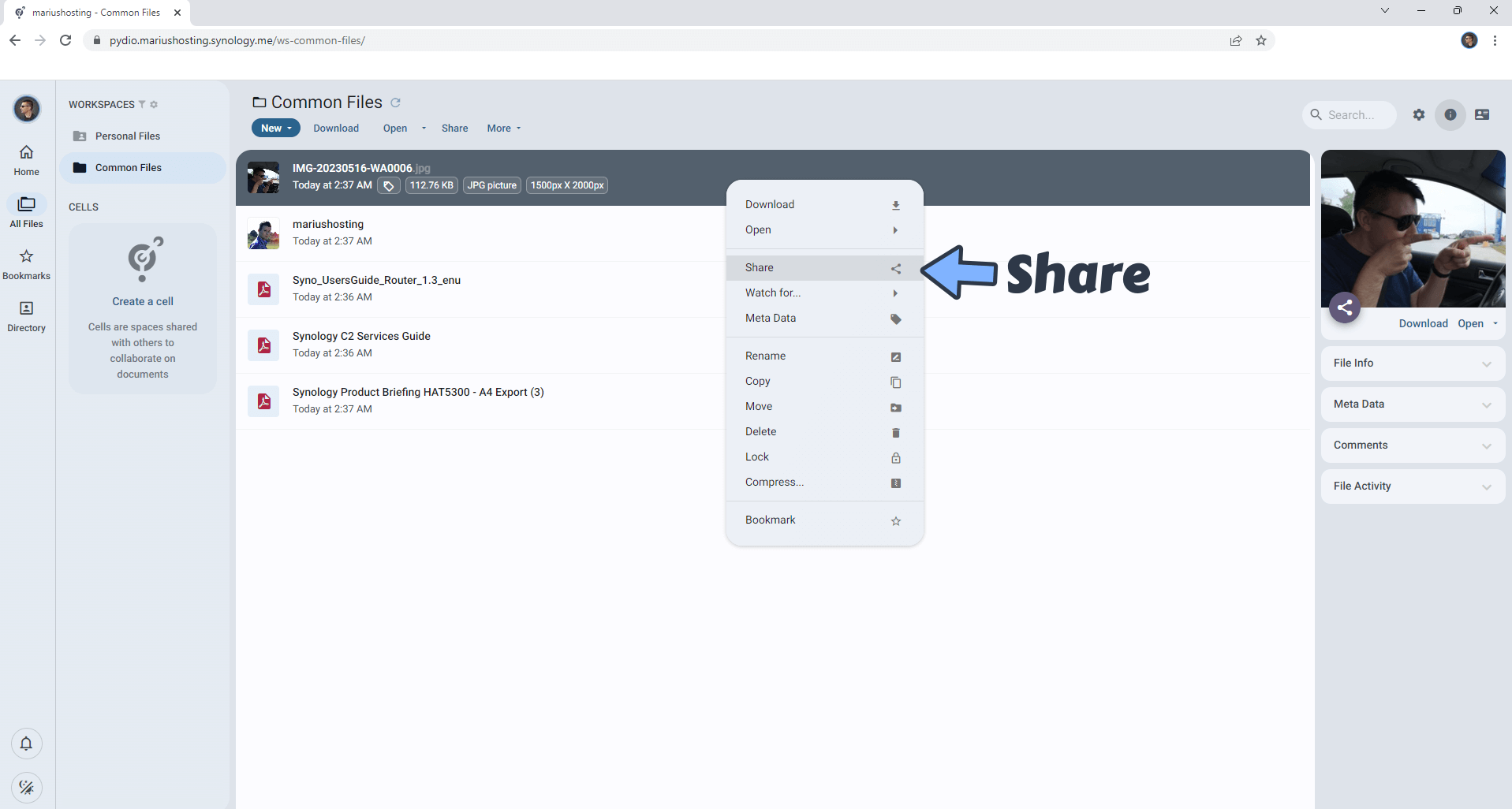
STEP 26
Give your shared Link to a Friend or Family member.

STEP 27
Set Up Email Notifications on Pydio Cells.
STEP 28
You can also download the Pydio Cells application for Android.
If you encounter issues by using this container, make sure to check out the Common Docker issues article. If your Pydio container is in an “unhealthy” status at STEP 13, change in the compose code the following line https://localhost:8080 with https://pydio.yourname.synology.me that you have previously created at STEP 6. Click update the stack.
Enjoy Pydio Cells!
Note: Read the Pydio Cells Full Documentation.
Note: Can I run Docker on my Synology NAS? See the supported models.
Note: How to Back Up Docker Containers on your Synology NAS.
Note: Find out how to update the Pydio Cells container with the latest image.
Note: How to Free Disk Space on Your NAS if You Run Docker.
Note: How to Schedule Start & Stop For Docker Containers.
Note: How to Activate Email Notifications.
Note: How to Add Access Control Profile on Your NAS.
Note: How to Change Docker Containers Restart Policy.
Note: How to Use Docker Containers With VPN.
Note: Convert Docker Run Into Docker Compose.
Note: How to Clean Docker.
Note: How to Clean Docker Automatically.
Note: Best Practices When Using Docker and DDNS.
Note: Some Docker Containers Need WebSocket.
Note: Find out the Best NAS Models For Docker.
Note: Activate Gmail SMTP For Docker Containers.
This post was updated on Thursday / June 26th, 2025 at 2:07 PM
